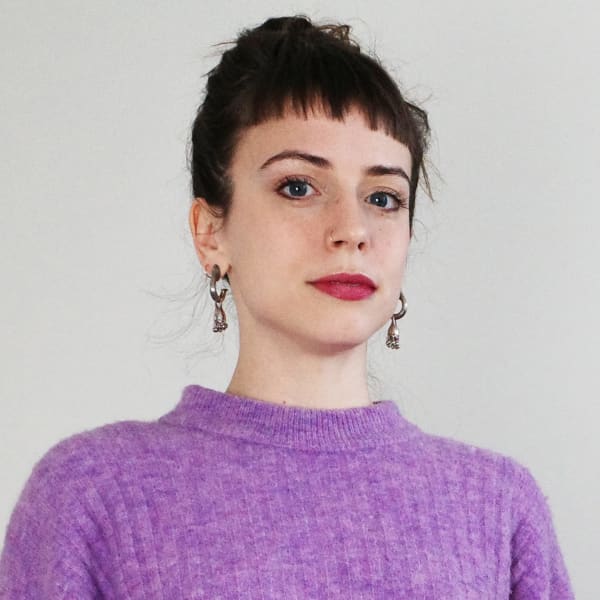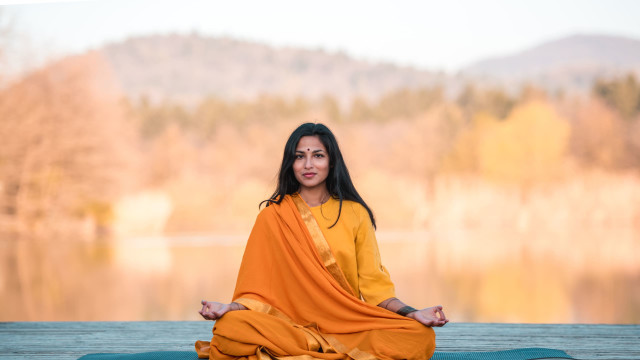I Hated Meditating Until It Worked

With a background in yoga, mental health, and Tibetan Buddhism, Rachel Webb uses her experience to help others achieve their wellness goals.
The executive director at Three Jewels, a yoga and meditation studio in New York City, talks about how to meditate for beginners, finding the right teacher, the practice of ethics, and the color she finds most inspiring.
Q: How do you meditate, and why do your meditation practices work so well for you?
A: I hated meditating before I found Tibetan Buddhist philosophy. When I began to study and believe in the possibility of enlightenment — the permanent end to suffering — I decided to follow the instructions of the scriptures. Every teacher said, “You have to meditate.” So I did. I didn’t like it, but I did it like a cancer patient listens to their doctor and tolerates the medication.
After 22 challenging years of life, I didn’t want to suffer anymore. I was desperate for some solution. And it began to work. Over the past seven years, I’ve learned how to do meditation by tweaking different meditation practices and my approach to them, so they are now moments of enjoyment in my life. Once you get results from figuring out how to meditate successfully, you don’t want to stop.
Q: What’s your top tip for someone learning how to meditate for the first time?
A: Many beginner meditators treat meditation like the vegetables they know they should eat but don’t want to eat. This is why so many people try meditating for a little while and then stop. When we look at meditation, it helps to understand it as a pleasant, creative, and invigorating experience, if we connect with the right teacher and practice.
When learning how to start meditating, it is essential to find a teacher that resonates. Books only go so far. Usually, we find master teachers and train with them to hone our craft, first in their image, and then refine it to make it our own. Working with the mind is no different. We want to find someone who speaks to our heart, pain and desires — someone who has been there and made it out. I may not be that teacher for everyone. But everyone can find someone who connects to their heart.
Q: Who’s had the most significant impact on your work?
A: Aside from my dear teacher, Hector Marcel, I am inspired by the late and holy Chögyam Trungpa Rinpoche for his wild and gorgeous teaching style and meditation techniques. He is a true artist, and his medium is life itself. People like this are rare. I name many beautiful women yogis and practitioners as inspirational to me — their beauty is a mirror for the future that this world will indeed become. Additional inspirations are anyone who is a master at their craft, like the chef Elisa da Prato. People who speak their minds and are unafraid. The color Klein Blue.
Q: What are your favorite topics to focus on in your classes?
A: I teach topics that come up for me in my own life as struggles or conduits of great pleasure. I teach about romantic and personal relationships, conditional and unconditional love, compassion, identity, and self-judgment. Most of all, I teach with the firm belief that we are all capable of magic and that meditation is a tool to discover that we are not as limited because we are often influenced by our past experiences and the experiences of others.
My teachings are based on the Tibetan Buddhist worldview, which I have trained in for the past seven years.
Q: Other than meditation, what daily tools do you use to feel your best?
A: Yoga asana is an essential practice for me to feel good, and it is also a tool to comb and prepare the subtle body for deep meditation practice.
The practice of ethics is also essential to my mental health. In Tibetan Buddhism, ethics are skills that you aren’t necessarily born with; you develop them. So I am constantly working to be more generous, honest, kind, patient, joyful, and intelligent. Finally, community service is essential to my practice. Everything I learn from my amazing teachers and community, I work hard to give it back to friends, family, and strangers hundredfold — because it feels good and because it’s the right thing to do.
Try this Roundglass course, How to Train Your Attention by meditation teacher Earle Birney to learn how to bring more focus to your meditation practice.
Header photo: PeopleImages/E+/Getty Images







